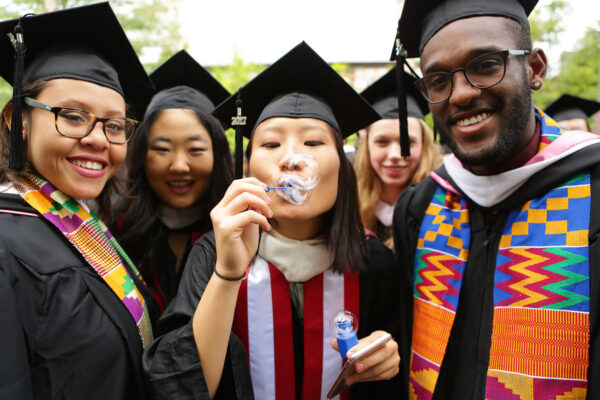Embracing Internationalization: Princeton in the Global Era
By Robin Matross Helms
Good things are afoot on the internationalization front at my alma mater. The Dec. 7 issue of the Princeton Alumni Weekly included an interview with Anastasia Vrachnos—herself an alum—who oversees all things international at Princeton as vice provost for international affairs and operations.
In the article, Vrachnos notes, “International experience is becoming a seminal part of the Princeton education.” While there was certainly internationally focused activity underway when I was a student in the 1990s, in recent years the institution has come to embrace the concept of “comprehensive internationalization,” which underpins the work we do in ACE’s Center for Internationalization and Global Engagement.
Under Vrachnos’s leadership, Princeton is making strides in all aspects of the CIGE Model for Comprehensive Internationalization: increasing the percentage of students who have an international experience before graduation, building strategic partnerships abroad, and supporting internationally-focused faculty research, among other activities.
Progress on the curriculum front is particularly noteworthy. A task force recently recommended updating the institution’s general education requirements to include foreign language study for all students, as well as courses with international content on “the intersections of culture, identity and power.”
An important aspect of the CIGE Model is the arrow that runs along the bottom, which underscores the interconnectedness of all aspects of internationalization.
As we often advise colleges and universities in our Internationalization Laboratory program, establishing a central presence for international activities on campus is key to fostering this interconnectedness and raising the profile of internationalization throughout the institution. Princeton is creating such a presence—physically, with the opening of its new Louis A. Simpson International Building in December, and virtually, with a dedicated “international” portal featured front and center on its home page.
As Vrachnos notes, “Internationalization is absolutely critical to delivering scholarship and teaching of unsurpassed quality…We are graduating students who will go into a globalized world. They’ll have to solve problems that are complex, to synthesize diverse perspectives, and to work in cross-cultural teams.”
Putting student learning at the heart of internationalization—and internationalization at the heart of student learning—is exactly what I want to see from my alma mater. I look forward to seeing Princeton’s internationalization efforts continue to unfold.
If you have any questions or comments about this blog post, please contact us.


